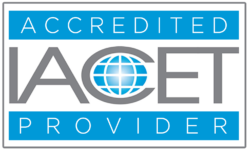Rick Wormelli (ASCD/Learning Forward) reminds us that student learning is enhanced when teachers set aside the last 5 – 7 minutes of class time for students to reflect on their learning rather than trying to teach more information up to the very last minute. As teachers, we intuitively know this, but in an effort to “cover the content” we frequently ignore the power of reflecting to increase learning.
Below are several examples of reflective activities and graphic organizers that are simple to use in fostering student reflection. These strategies also serve to provide teachers with formative assessment to guide instruction.
3-2-1
3-2-1 is an exit slip strategy/reflection that provides a quick formative assessment of students’ learning. Students are instructed to use a piece of paper or index card to record the following:
- 3 things that are clearer to them regarding the day’s topic or concept;
- 2 connections they are making between the new concept and their prior knowledge or experience;
- 1 question/piece that needs further clarification.
The teacher collects the slips as students leave the room and uses the information to inform the next day’s lesson and/or to differentiate instruction for students. This reflection helps students identify and summarize their learning.
Circle-Triangle-Square (Shape Your Thinking)
Circle-Triangle-Square is a strategy to help students focus their reading; summarize important information; and make sense of informational text. It uses a simple graphic organizer to foster clearer thinking regarding new information in any content area.
Circle-Triangle-Square works like this: Each student is given a sheet of paper (or a sample can be drawn on a board and students recreate it for their own use) with a Square and the statement: What squares with my thinking? In other words, what part of the reading matches my own thoughts, knowledge, beliefs, or emotions? Students use the space next to the square or within the square to record their thinking.
The second shape on the paper is a triangle with the following question next to it: What three points (ideas) do I want to remember about this text? Students then summarize their reading and record three things they wish to remember in or next to the triangle.
The third shape on the paper is a circle. The question connected to the circle is, What questions are still circling around in my head about what I read? Students then focus on what questions they have about the concept or information presented in the text. Once completed, the graphic organizers can be used in conjunction with round robin or other cooperative learning strategies to engage students in conversation to debrief text.
Teachers may want to add color to the shapes to increase student retention of information. Visual-Spatial learners respond well to graphic organizers such as this one to help them summarize and make sense of text. Students with a strong need to interact will respond positively to an opportunity to share what they have written on their squares, triangles, and circles, while bodily kinesthetic learners will appreciate movement added to sharing their responds to the questions. Movement can be included in strategies such as Stand-up, Hand-up, and Pair-up.
Snapshot
Snapshot is a good in-the-moment reflection for students at all grade levels. The teacher uses a “snapshot” to engage students in meta-cognitive thinking. As implied in the title, it stops action to take a quick snapshot for students at a point in the lesson. The teacher then encourages individuals/groups to take a balcony view by asking a question such as “What are you noticing about your learning?” “What are you noticing about this activity/process?” “What are you noticing about the class as a whole?”
Responses can be shared verbally as a whole group or in pairs with other students, or they can be written. Snapshot encourages learners to slow down and think about their learning.
Learned, Affirmed, Challenged
Learned, Affirmed, Challenged (LAC) is a strategy for engaging in debriefing and/or reflecting on written content. LAC is helpful in nudging students to identify new learning from what they have read, viewed, or heard. It also guides students to acknowledge what they already knew and had affirmed (confirmed) and this builds student efficacy. Finally, students are asked to identify questions that remain for them and/or how the new learning may be challenging their thinking (perhaps their misconceptions).
The three questions for LAC can be posted on the board, or printed on a handout. Once students complete the reflection individually, they may be asked to share with a partner or with a group of four students. Finally the whole class may debrief what was learned, affirmed, or challenged.
Most Important Point
Most Important Point (MIP) is a strategy used for reflection, review, and formative assessment. Students reflect on the content of the lesson and summarize their MIP. These are generally written on post-it notes (can post on the board as a Ticket Out the Door) or on 3 x 5 cards and shared at table groups. This allows the facilitator or teacher to check for content or concepts that have “stuck” with students.

